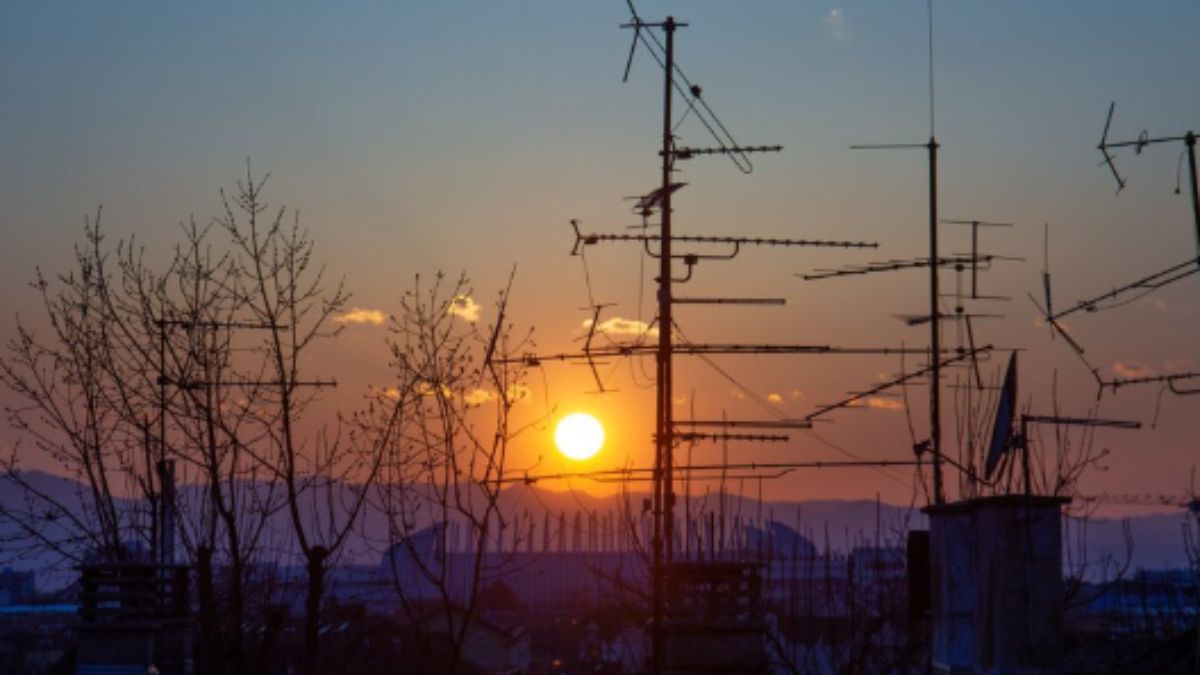Topic
Exploring Local Cultures: A Unique Addition to Your Tanzania Safari Holidays

When planning a trip to Tanzania, the allure of spotting the Big Five or witnessing the great wildebeest migration often dominates itineraries.
However, to truly connect with the essence of this vibrant nation, integrating its rich cultural heritage into your safari can profoundly enrich your experience.
Engaging with local tribes and exploring historic sites not only deepens your understanding of Tanzania but also transforms a typical wildlife tour into a more meaningful adventure.
By embracing these cultural encounters, travelers gain invaluable insights into the traditions and lifestyles that shape this unique corner of the world.
Cultural Activities and Locations
Village tourism in Tanzania provides a wide barred window into the country’s diversity in culture, ranging from bustling street-side villages like Mto wa Mbu to the quiet and totally remote villages, while village tours form one mainstay of tanzania safari holidays. This is a chance for hands-on experiences with local artisans, observe traditional crafts in action, and understand daily community life in Tanzania. Besides, much of the colorful history of Tanzania comes alive through diverse cultural heritage sites.
For instance, the scattered ruins of Kilwa Kisiwani, a UNESCO World Heritage Site, and the famous Olduvai Gorge, also known as the “Cradle of Humankind,” cast much light on historical and evolutionary significance. Not to forget, no immersion is complete without a tour of the vibrant local markets, such as the one in Arusha.
These markets are, in fact, hubs of activities where visitors can feel the colors, sounds, and scents of Tanzanian life thick in the air, with lively haggling with vendors and an opportunity to contribute to the local economy through purchasing of handicrafts and local produce.
Key Cultural Experiences in Tanzania
Maasai Tribes: Guardians of Pastoral Traditions
Who are they?
The Maasai, numbering over 1 million, are celebrated for their distinctive pastoral lifestyle. Their culture is rich with traditional dress and captivating rituals.
What to Experience
- Cultural Connection: Visitors can observe their profound bond with the land.
- Ceremonial Dances: Engage in vibrant dances, understanding their symbolic meanings.
- Social Insights: Learn about the Maasai’s complex social structures and community roles.
Hadzabe and Datoga Tribes: Windows to the Past
Who are they?
- Hadzabe: This tribe is among Africa’s last hunter-gatherers, residing in the Yaeda Valley near Lake Eyasi.
- Datoga: Known for their blacksmith skills, the Datoga complement the Hadzabe with their unique cultural traits.
What to Experience
- Hunter-Gatherer Lifestyle: Discover the Hadzabe’s enduring traditions and their sustainable ways of living off the land.
- Craftsmanship: Observe Datoga’s expertise in metalworking and its cultural significance.
Chaga Community: Sustainable Practices on Kilimanjaro
Who are they?
The Chaga are indigenous to the slopes of Mount Kilimanjaro, known for their advanced agricultural practices and sustainable land management.
What to Experience
- Agricultural Techniques: Tour Chaga villages to see innovative farming techniques firsthand.
- Cultural Heritage: Learn about traditional architecture and the significance of Mount Kilimanjaro in Chaga culture.
These cultural interactions provide a deeper understanding of Tanzania’s diverse communities, enriching your travel experience by connecting you more closely with the traditions that have shaped these unique societies.
Benefits of Cultural Tourism in Tanzania
Economic Impacts: Supporting Local Communities
Besides enriching the experience of travelers, cultural tourism pays dividends to the economy of Tanzania in great measure. For instance, the Travel & Tourism market in Tanzania is expected to see robust growth, with revenue projections indicating that the expenditure might reach a high of US$767.00 million in 2024.
This growth underlines the important contribution that cultural and sustainable tourism brings about in terms of income generation and job creation at the local community level. It is through this interaction with the indigenous people and their local artisans that tourists ensure a contribution to the economic uplift and, therefore, sustainable development and community empowerment.
Educational Benefits for Travelers: Deeper Understanding and Respect
Cultural Exchange
Participating in cultural exchanges allows travelers to gain a deeper appreciation for Tanzania’s diverse traditions and lifestyles.
Promoting Mindfulness
This enhanced understanding encourages travelers to engage in more respectful and responsible travel practices, fostering cross-cultural respect.
Planning Your Cultural Safari
The best time for the different cultural activities of Tanzania differs from the experiences sought. The period between June and October usually relates to the dry season and correlates with most of the events and festivals of Tanzania, therefore being suitable for undertaking a cultural safari.
From November through to May of the year, during the wet season, you will get unique opportunities to see traditional agriculture and participate in many local markets, hence giving insights into the culture of Tanzanians from a different angle.
Cultural safari planning in Tanzania needs special respect for customs and traditions; proper dress codes, etiquette, and behavioral guidelines need to be put in mind by travelers before mingling with the community.
This involves interacting respectfully, openly, and with curiosity about the cultural practices one encounters. It is only such an approach that ensures respect and a rich experience, in terms of quality and diversity, for both visitors and communities alike.
Explore Tanzanian Cuisine on Your Safari Adventure
When on a safari in Tanzania, you’ll have the opportunity to try a variety of traditional dishes that reflect the country’s rich cultural heritage. Key staples include:
- Ugali: It is a thick porridge made with cornmeal and most often eaten with meat or vegetable stews.
- Pilau: Spiced rice prepared with ingredients such as curry, cinnamon, cloves, hot peppers, and cumin, especially on occasion.
- Nyama Choma: One of the staple grilled meats traditionally enjoyed during festivities.
- Mandazi: Fried doughnut-like bread that is commonly fried and just eaten or taken with tea.
- Vitumbua: These are rice pancakes blended with coconut, typically eaten for breakfast.
- Wali wa Nazi: Rice cooked in coconut milk, offering a creamy and rich flavor, often served with fish or meat curries.
- Mchuzi wa Samaki: A fish curry that incorporates coconut milk, enjoyed across the Tanzanian coast.
These dishes showcase the diversity of Tanzanian cuisine, which is influenced by African, Arab, and Indian flavors, making your safari not just a journey through nature.
Final Thoughts
A safari in Tanzania is so much more than the archetypal wildlife experience; rather, it’s a continuous journey into the nation’s food and cultural heritage. From tasting local foods such as ugali to mchuzi wa samaki, village visits, and en-suite market tours, each activity adds something new to the knowledge base of guests visiting Tanzania. Such expeditions treat not only the senses but also provide fodder for the local economy, making a Tanzanian safari truly immersive and influential.
FAQs About Cultural Safaris in Tanzania
What is a cultural safari in Tanzania?
A cultural safari in Tanzania offers travelers a chance to explore the rich heritage of Tanzania’s indigenous communities, including their daily lives, traditions, crafts, and ceremonies. It differs from traditional wildlife safaris by focusing on the local culture and lifestyle.
Are cultural safaris family-friendly?
Yes, cultural safaris can be family-friendly, especially for families interested in learning about different cultures and ways of life. Certain activities, like village tours and market visits, are engaging for all ages.
What activities are included in a cultural safari?
Activities include village visits, traditional cooking lessons, learning traditional crafts, attending cultural performances, and participating in local ceremonies.
Topic
Simple Appearance Upgrades That Lift Your Mood

The way we present ourselves plays a significant role in how we feel day to day. Our appearance reflects our personality and impacts our confidence, self-esteem, and mood. When we feel good about how we look, it can influence our posture, social interactions, and even our motivation levels. Boosting your mood through appearance doesn’t have to involve drastic changes or costly makeovers. Simple upgrades, easily incorporated into your daily routine or wardrobe, can make a profound difference. From refreshing your hairstyle to reorganizing your closet, small improvements can foster positivity and a greater sense of self-worth.

Update Your Hairstyle for a Fresh Start
One of the quickest and most effective ways to feel renewed is by changing your hairstyle. Whether it’s a trim, a new color, or a completely different cut, a hairstyle shift can dramatically alter how you view yourself in the mirror. Hair has emotional power. It represents change, reinvention, and control. Visiting a trusted stylist can be a self-care ritual that boosts mental well-being. Even simpler changes like trying a new part, adding texture, or styling with a fresh accessory can lift your look and your spirits. When your reflection feels more aligned with how you want to feel, your confidence naturally improves.
Enhance Your Skincare Routine
Taking care of your skin is one of the simplest ways to boost your confidence and lift your mood. A consistent skincare routine tailored to your needs can improve your complexion’s health and glow, making you feel refreshed and radiant every day. Beyond cleansers and moisturizers, some choose to enhance their natural beauty with subtle cosmetic options like lip fillers. When done thoughtfully, experts from https://drscottallison.com.au/lip-filler/ explain, lip fillers can add gentle volume and definition, creating a youthful and balanced look that complements your appearance. This small enhancement often provides a positive emotional boost, helping you feel more confident and comfortable in your skin.
Reorganize and Refresh Your Wardrobe
Our clothes are more than just fabric; they’re an extension of our identity. Sorting through your wardrobe to eliminate items that no longer fit, feel comfortable, or match your style can be a surprisingly freeing experience. By curating a closet of pieces you love and feel great in, you create a daily opportunity to start the morning on a positive note. Consider introducing a few new staples, such as a flattering jacket, a pair of well-fitted jeans, or a vibrant scarf, to inject life into your outfits. Even color choice affects mood; wearing bright or soothing hues can uplift your emotional state and communicate energy or calmness to those around you.
Accessorize with Intention
Accessories can transform an otherwise plain outfit and provide a sense of uniqueness and polish. Choosing items that reflect your personality, such as statement earrings, a favorite watch, or a meaningful necklace, can offer a boost of joy every time you put them on. Accessories allow you to express creativity without changing your entire wardrobe. Even something as simple as a new handbag, belt, or pair of sunglasses can spark a sense of excitement. Intentional accessorizing helps you feel more put-together and can serve as a small yet impactful mood elevator, particularly when you receive compliments or notice your sparkle in a mirror.
Upgrade Your Posture and Body Language
While not an external item like clothing or makeup, your posture and body language significantly influence your appearance and how you feel. Standing tall, walking with purpose, and maintaining an open, relaxed posture can project confidence and positively impact your mood. Simple posture improvements, such as pulling back your shoulders or keeping your chin up, can create the psychological feedback loop of feeling stronger and more in control. Practicing yoga, stretching, or using a posture-correcting aid can support long-term improvement in how you carry yourself. This improves your presence and reinforces an internal feeling of well-being and empowerment.
Introduce a Signature Scent
Scent is a powerful trigger for emotions and memories. Wearing a fragrance that you love can become a mood-lifting ritual, setting the tone for your day. Whether it’s a light floral perfume, a fresh citrus body spray, or a calming essential oil blend, a pleasing scent can provide comfort and confidence. Choosing a signature scent adds a layer of intentionality to your appearance, giving you something special that’s uniquely yours. It’s a subtle yet sensory upgrade that can make you feel more refined, energized, or relaxed, depending on the aroma you choose. Simply put, smelling good can make you feel good, and others will notice it, too.

Feeling good about how you look doesn’t require an extreme makeover or a high-end wardrobe. Simple, thoughtful appearance upgrades can yield big returns in how you feel emotionally and mentally. Whether it’s through grooming habits, wardrobe updates, posture improvements, or scent selection, taking control of your presentation is an empowering way to nurture your inner well-being. By incorporating a few small changes, you can elevate your appearance and your outlook on life.
Topic
How Emergency Standby Power Keeps Critical Systems Running During Outages

Power outages can strike without warning, disrupting homes, businesses, and critical infrastructure. Whether caused by storms, equipment failure, grid overload, or maintenance issues, these outages can lead to substantial financial losses, safety hazards, and operational setbacks. For facilities that rely heavily on continuous electrical power, such as hospitals, data centers, manufacturing plants, and emergency response centers, losing electricity for even a few seconds can have severe consequences.
Emergency standby power systems provide a lifeline in these situations. Designed to automatically supply electricity when the primary power source fails, these systems ensure that important equipment and services remain operational. They prevent business disruption and protect lives, data, and assets in environments where downtime is simply not an option.

The Role of Standby Generators in Power Continuity
At the heart of most emergency standby power systems is a standby generator. These generators are designed to automatically start when an outage is detected and provide power until utility service is restored. Unlike portable generators that require manual activation and limited capacity, standby generators are permanently installed and integrated into a building’s electrical system.
They are typically fueled by diesel, natural gas, or propane, and are capable of powering entire facilities or designated circuits depending on the system design. When properly sized and maintained, standby generators can run for hours, or even days, without interruption.
What makes them truly valuable is their ability to engage automatically and seamlessly. The moment a disruption is sensed, the system reacts within seconds to restore power, ensuring minimal downtime and no manual intervention during a crisis.
Why Transfer Switches Are Important
A critical component of any standby power system is the transfer switch. This device detects a failure in the utility power and shifts the electrical load to the generator. Once utility power is restored, the switch transfers the load back, allowing the generator to shut down safely. Facilities looking to streamline this process often search for automatic transfer switches for sale to upgrade their emergency systems with faster and more reliable switching capabilities. These switches are crucial in maintaining uninterrupted service in high-stakes environments like healthcare facilities or emergency response centers.
Automatic transfer switches work by constantly monitoring voltage from the utility line. When a drop or loss is detected, the switch initiates generator startup and transitions power to the standby source. Once normal service resumes, the switch completes the transfer back and signals the generator to cool down and shut off. This sequence happens without human input, eliminating delays and reducing risk.
Applications That Depend on Standby Power
While most buildings benefit from some level of backup power, certain sectors absolutely require it. Hospitals and healthcare clinics use standby systems to keep life-saving equipment functioning during grid failures. Critical functions such as ventilators, monitors, electronic records, and surgical instruments cannot afford even brief interruptions.
Data centers depend on uninterrupted power to prevent data corruption, service downtime, and network instability. Many modern business operations, from e-commerce to cloud storage, rely on real-time data availability and uptime guarantees. For these organizations, power continuity is not a luxury, it’s a contractual and operational requirement.
Manufacturing plants use standby power to keep machinery running and protect sensitive production lines from abrupt halts that can cause quality issues or equipment damage. Cold storage facilities use it to preserve inventory, while communication centers use it to maintain connections during emergencies.
System Design and Customization
The effectiveness of a standby power solution depends heavily on how well it’s designed for the specific needs of the facility. A thorough assessment is necessary to determine which systems and circuits require backup, how much power is needed, and what kind of generator and transfer switch will best serve the environment.
Some facilities require whole-building coverage, while others may only need to power critical systems like emergency lighting, refrigeration, or IT infrastructure. The size and fuel source of the generator must align with usage patterns and runtime expectations. The location of the generator must meet ventilation, accessibility, and noise regulations.
Customization ensures efficiency and cost-effectiveness. Over-sizing a system leads to unnecessary expenses, while under-sizing can result in power failures during high-demand periods. Professional installation and consultation are key to ensuring that the standby system performs reliably when it’s needed most.
Maintenance and Testing
Installing an emergency standby power system is only the first step. Ongoing maintenance and periodic testing are key to ensure the system will operate correctly in the event of an outage. Generators should be inspected regularly for fuel levels, oil quality, battery charge, and coolant condition. Transfer switches should be tested to confirm proper functionality and response times.
Most industry standards recommend monthly testing, including full-load tests under simulated outage conditions. This verifies that the generator will start and sustain the load and exercises the system to keep components in working condition.
Failing to maintain the system increases the risk of failure during a real emergency. Scheduled inspections, service contracts, and record-keeping contribute to the longevity and dependability of the equipment.
Compliance and Regulatory Considerations
Standby power systems must comply with national and local codes when used in regulated industries. Healthcare facilities are subject to guidelines from organizations such as the National Fire Protection Association (NFPA), which mandates testing intervals, load requirements, and installation protocols.
Building codes may dictate where and how equipment can be installed, particularly in terms of noise levels, emissions, and proximity to flammable materials. Non-compliance can lead to fines, delays in permitting, or insurance complications.
Businesses should work with knowledgeable installers and consultants who understand these regulations and can design systems that meet both operational and legal standards.
Future Trends in Standby Power
Technology in the standby power space continues to evolve. Hybrid systems that integrate battery storage with traditional generators are gaining traction for their ability to bridge the gap between power loss and generator startup. Smart monitoring systems now allow for real-time diagnostics, remote testing, and predictive maintenance.
Sustainability is becoming a greater focus. Advances in clean energy generators, such as those powered by hydrogen or renewable biodiesel, offer environmentally responsible alternatives without compromising reliability.
As demand for uninterrupted service grows, so does the innovation around how we provide and manage backup power. These advancements promise greater efficiency, faster response, and reduced environmental impact, all while keeping critical systems online during power disruptions.

Emergency standby power is more than a safety net, it’s an operational necessity for many industries. By providing immediate, reliable power during outages, these systems prevent costly downtime, protect crucial functions, and ensure business continuity when it matters most. Through careful planning, proper equipment selection, and regular maintenance, businesses can safeguard their infrastructure and people against the risks of power failure. Whether it’s for healthcare, data protection, manufacturing, or public safety, a well-designed standby system is one of the smartest investments an organization can make.
Topic
Dealing with a Persistent Pest Issue? Here’s What You Need to Do

There is only one thing worse than discovering a pest infestation in your home, and that’s discovering that the pest Pest Issue infestation is still there after you have already taken pest control measures.
By their nature, pests are resilient. If they found a good breeding ground in your home, they will come back, especially if the pest control method you used to get rid of them wasn’t thorough enough.
That doesn’t mean you have to despair. If you have a recurring pest infestation, here are a few important steps you can take to make your property critter-free once and for all.
Hire a Professional Exterminator

If you’ve been trying to manage your pest issues on your own, it’s time to hire a professional exterminator. For persistent pest infestations, DIY solutions or products that you can buy at the local hardware store usually aren’t strong enough to make a difference.
Look for exterminators that are proven to provide lasting solutions to pest control issues. The team at North Fulton Pest Solutions, for instance, has been serving the Atlanta area for more than 50 years, which means they have plenty of experience with all kinds of infestations. Look for positive reviews or ask your neighbors for recommendations.
For persistent pest infestations, you may need multiple visits from an exterminator. Talk with the professionals you hire and make sure that they are transparent about their plans and how much it will cost.
Get Rid of Their Habitats

When pests keep coming back to a home, usually it’s because they found something there that they like. Go through your home and property to find potential habitats and sources of food that may be attracting pests. A professional exterminator can also help you analyze your property to find potential pest breeding grounds.
Throw out any clutter such as old newspapers, junk, or garbage bags, especially in out-of-the-way spaces like crawlspaces and attics. Clutter provides pests with a nesting ground. It can even be a source of food.
Standing water is another attraction for pests, especially mosquitoes and other bugs. Get rid of pools or places where puddles form when it rains. Go over your plumbing to find any hidden leaks that may be attracting pests.
Make Sure They Can’t Come In
There’s no point in making your home unwelcoming to pests if you’re unwittingly inviting them in. Go over your home and identify places where pests can get inside, such as cracks, open windows, or crawlspaces.
Seal off any potential entrance points for pests. That way, once you redo your pest control treatment, they won’t be able to come back.
Finding Pest Control Solutions That Last
Persistent pest infestations are the nightmare of every homeowner, but you can manage them with the right help. Make sure that your home is inhospitable to pests by getting rid of their habitats, food sources, and points of entry. That way, you can prevent future infestations.
To get rid of persistent infestations, you need help from a professional exterminator. They can provide treatments that remove long-lasting pest colonies and advise you on ways to prevent future infestations. It may take multiple visits, but a good exterminator will help you get rid of pests once and for all.

 Cartoon1 year ago
Cartoon1 year agoUnlocking the Potential of Nekopoi.care: A Comprehensive Guide

 Game1 year ago
Game1 year agoExploring Aopickleballthietke.com: Your Ultimate Pickleball Destination

 BUSINESS1 year ago
BUSINESS1 year agoWhat Companies Are In The Consumer Services Field

 BUSINESS1 year ago
BUSINESS1 year agoUnraveling the Mystery of 405 Howard Street San Francisco charge on Credit Card

 HOME IMPROVEMENT1 year ago
HOME IMPROVEMENT1 year agoVtrahe vs. Other Platforms: Which One Reigns Supreme?

 TECHNOLOGY1 year ago
TECHNOLOGY1 year agoThe Guide to Using Anon Vault for Secure Data Storage

 ENTERTAINMENT11 months ago
ENTERTAINMENT11 months agoUnderstanding Bunkr Album: A Comprehensive Guide

 ENTERTAINMENT1 year ago
ENTERTAINMENT1 year agoThe Epic Return: Revenge of the Iron-Blooded Sword Hound
















